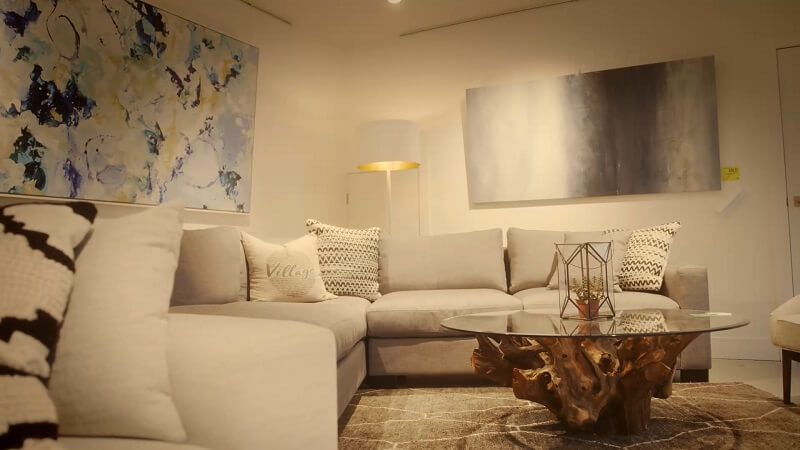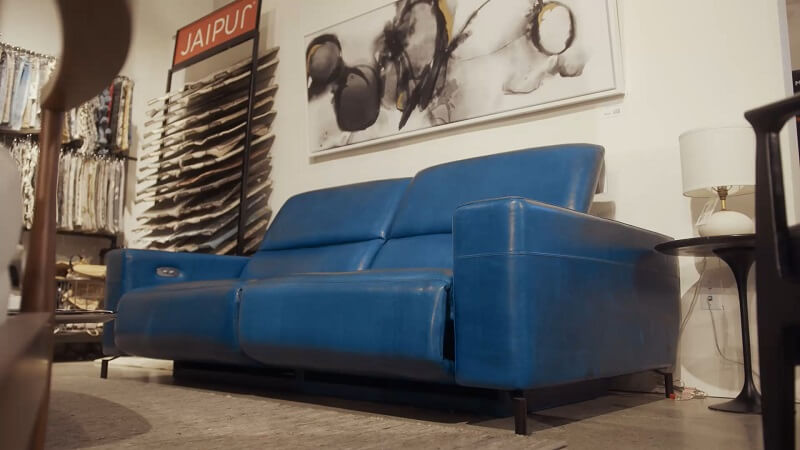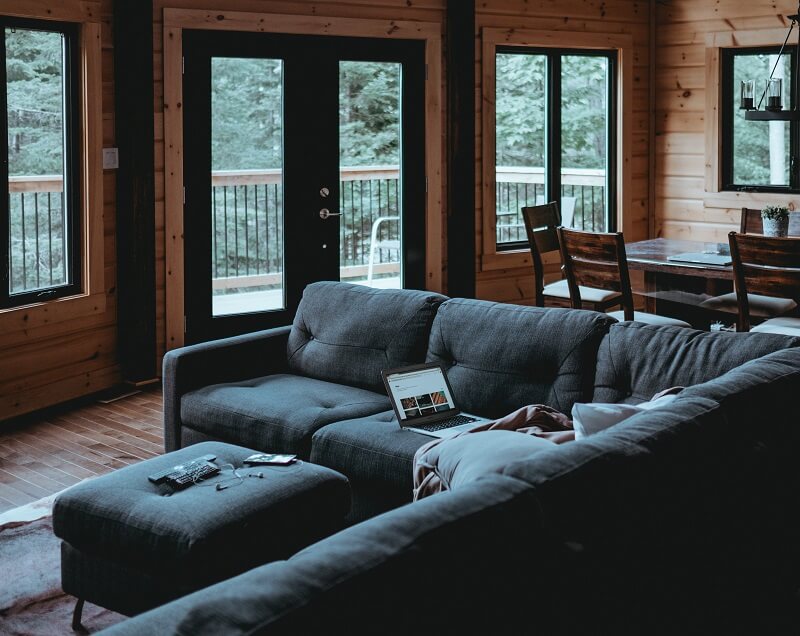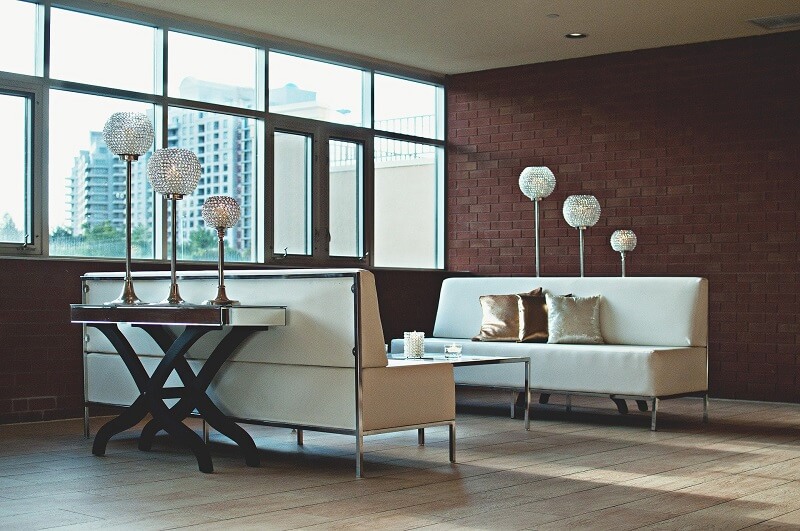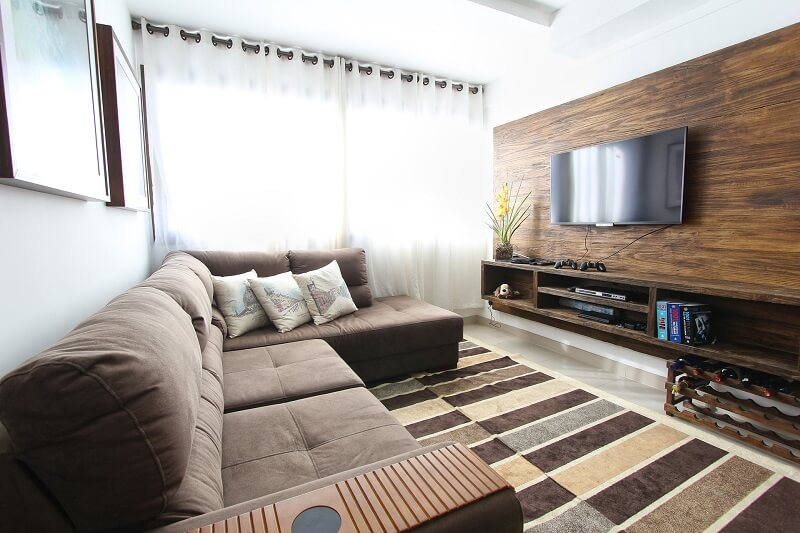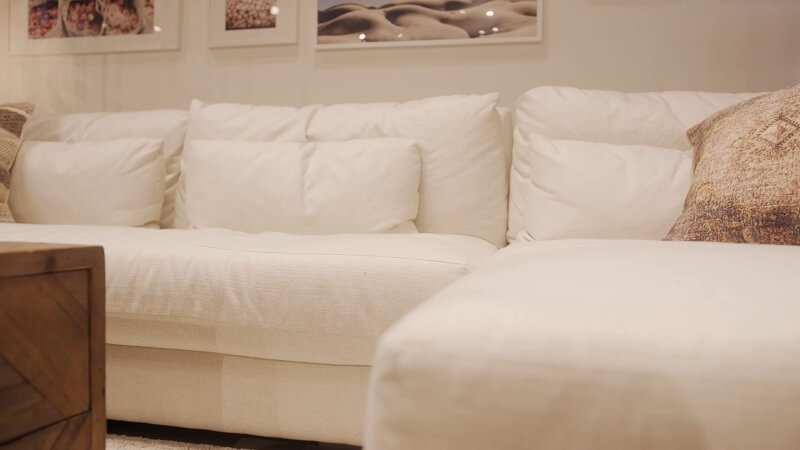Couch fabric considerations
The material with which your couch is upholstered will affect both its appearance and durability—so choosing the right upholstery fabric is key.
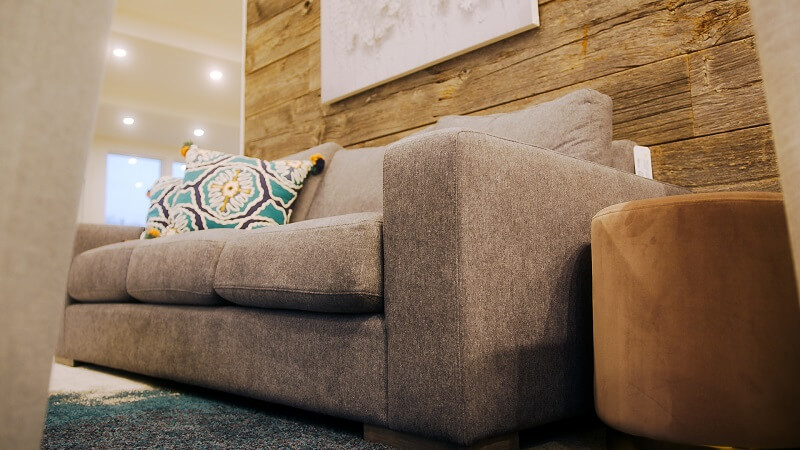
What you’re looking for is the material’s durability and stain-resistance.
Durability
You want to have a fabric that’s sturdy enough to stand up to wear and tear. Of course, the amount of abuse your couch will suffer depends on your lifestyle.
The durability of couch fabric is measured in double rubs. To figure out double rub measurements, manufacturers use a device that rubs a sample of the fabric repeatedly, back and forth. Each back-and-forth cycle is one double rub. The process continues until the fabric starts to show signs of wear, which usually takes thousands of double rubs.
- Material rated at less than 10,000 double rubs is low durability. That’s not to say it’s bad, it just won’t stand up to as much wear and tear, so avoid it if you live in a high-traffic household.
- Material rated from 10-15,000 double rubs is medium-duty and will accordingly stand up to an average amount of abrasion.
- At 15,000+ double rubs, you’re looking at heavy-duty material. This is what you want if you’ll have a large family or pets making use of your new couch.
Stain resistance
The Achilles heel of even the most durable upholstery is staining. Wine, food, muddy pets, and who-knows-what-else can ruin your new couch in the blink of an eye.
There are two ways you can help your couch defend itself against stains: fabric colour and stain-resistant coating.

- Choosing the right fabric colour and pattern won’t magically repel stains, but it can hide them. If you know people are going to be eating or drinking on your new couch—who doesn’t occasionally eat in front of the TV?—choose darker colours or busy patterns. These will ensure that stains won’t appear too vividly.
- Bold patterns won’t magically repel stains, but stain-resistant fabric coatings Modern technology has blessed us with material like Crypton or Revolution, which repel stains like a raincoat repels water.
Consider your budget
Last, but certainly not least, the amount of money you wish to spend will affect your couch choices as well.
One note on price: you can often find furniture at deep discounts. If you’re not in urgent need of a new couch, it pays to shop around and be patient. You might get lucky and snag an expensive couch at a great price from a blowout sale.
The main factors that influence the price of a couch (other than size—bigger costs more) are quality of construction, and the cushions and upholstery material.
Quality of construction
Your couch’s frame determines how long the physical structure survives before it starts breaking down and sagging.
High-quality couches have frames made of hardwood. Hardwood frame couches will hold their shape and stability for a long while. Of course, they also carry a higher price tag. Softwood frames are somewhere in the middle, being less expensive but also less durable.
The lowest-priced couches—like many from everyone’s favourite Swedish furniture retailer—are built from materials such as particleboard or plywood. While they certainly are more affordable, couches of this type are prone to deformation.
The other factor in couch construction is the joints. High-quality couches typically have joints that are dowelled and screwed, whereas less-expensive models may have nothing but staples holding them together.
Cushions and material
The couch’s fabric is a big part of the price, as is the stuff that fills the cushions.
When it comes to fabric (or non-fabric coverings like leather), you have plenty of options. First, there are natural fabrics like cotton, linen, wool, or even silk. These are durable, though can be prone to moisture damage. Cotton is also one of the more affordable coverings.
Then, you have synthetic upholstery like polyester, acrylic, or nylon. Synthetic materials are more stain-resistant than natural ones, so pet owners or couch-diners may prefer these. You’ll also find couches upholstered in blended materials, which weave together several types.
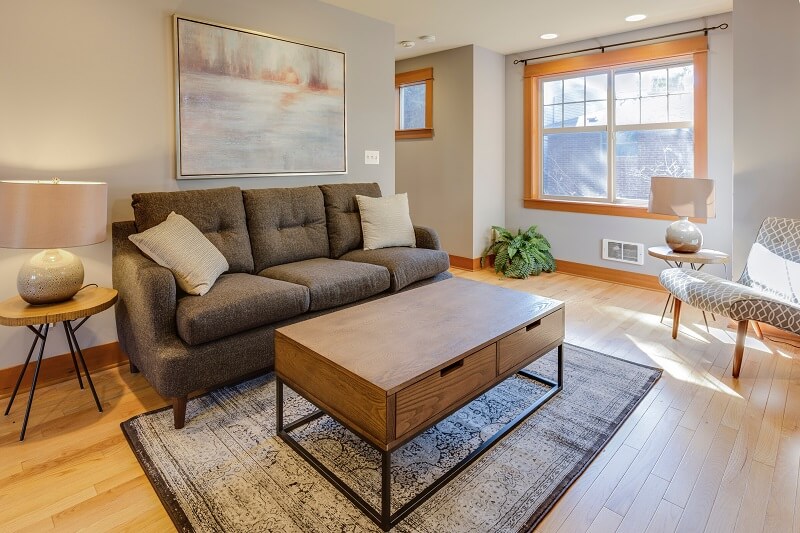
And finally, there are specialty materials like the stain-repellant options we mentioned above, or leather—all of which will add a hefty sum to the price tag.
Then, there are the cushions. Many couch cushions are filled with foam, which comes in varying densities. High-density foam is firmer, and more likely to hold its shape over time compared to low-density foam. There’s also memory foam, which conforms to the shape of the sitter’s body.
Feather- or down-filled cushions are also common. They’re a good fit if softness is what you desire above all else. Feather cushions can be inexpensive, but cheap versions may quickly become lumpy. Down cushions, meanwhile, are even softer—though accordingly more expensive.
Some couches also have polyester-filled cushions. Some are stuffed with tiny polyester balls, which are durable but not necessarily soft. You can also find faux-down cushions, filled with polyester that’s crafted to mimic the softness of down. These are a desirable choice if you’re sensitive to real feathers or down.
What’s the average price for a couch?
Inexpensive couches—the particle board or plywood varieties—go for under $1,000. Mid-range coaches run from $1,000 – $2,000, and a high-end couch is going to set you back $2,000 at the very least.
On average, a low-to-mid-range couch should cost around $1,000.
Couches and home insurance
Fortunately, there aren’t many special considerations when it comes to couches and home insurance. They’re part of your coverage for personal property (a.k.a. contents).
If you’re buying a new couch, though, make sure that your contents limit is high enough to cover it. Upgrading from a plywood loveseat to a genuine-leather sectional with recliners will add a lot of value to your personal property.
Your home insurance will insure your couch against the usual perils, like fire or theft. But many policies will also insure it against accidental damage, say, from spilled red wine. If you’re investing thousands in a new couch, that type of protection may be useful indeed (though you’d still need to pay your deductible before your insurance replaces your couch).
Watch our full video
Want to learn more? Visit our Interior Design resource centre for inspiration and tips to help you create the perfect living space. Or, get an online quote in under 5 minutes and find out how affordable personalized home insurance can be.

